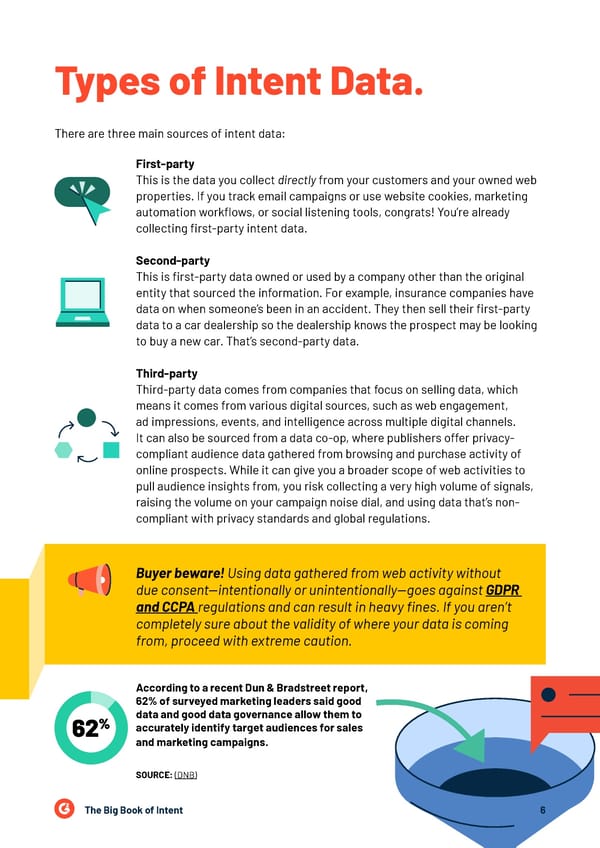Types of Intent Data. There are three main sources of intent data: First-party This is the data you collect directly from your customers and your owned web properties. If you track email campaigns or use website cookies, marketing automation workflows, or social listening tools, congrats! You’re already collecting first-party intent data. Second-party This is first-party data owned or used by a company other than the original entity that sourced the information. For example, insurance companies have data on when someone’s been in an accident. They then sell their first-party data to a car dealership so the dealership knows the prospect may be looking to buy a new car. That’s second-party data. Third-party Third-party data comes from companies that focus on selling data, which means it comes from various digital sources, such as web engagement, ad impressions, events, and intelligence across multiple digital channels. It can also be sourced from a data co-op, where publishers offer privacy- compliant audience data gathered from browsing and purchase activity of online prospects. While it can give you a broader scope of web activities to pull audience insights from, you risk collecting a very high volume of signals, raising the volume on your campaign noise dial, and using data that’s non- compliant with privacy standards and global regulations. Buyer beware! Using data gathered from web activity without due consent—intentionally or unintentionally—goes against GDPR and CCPA regulations and can result in heavy fines. If you aren’t completely sure about the validity of where your data is coming from, proceed with extreme caution. According to a recent Dun & Bradstreet report, 62% of surveyed marketing leaders said good data and good data governance allow them to accurately identify target audiences for sales and marketing campaigns. SOURCE: (DNB) The Big Book of Intent 66
 The Big Book of Intent Page 5 Page 7
The Big Book of Intent Page 5 Page 7